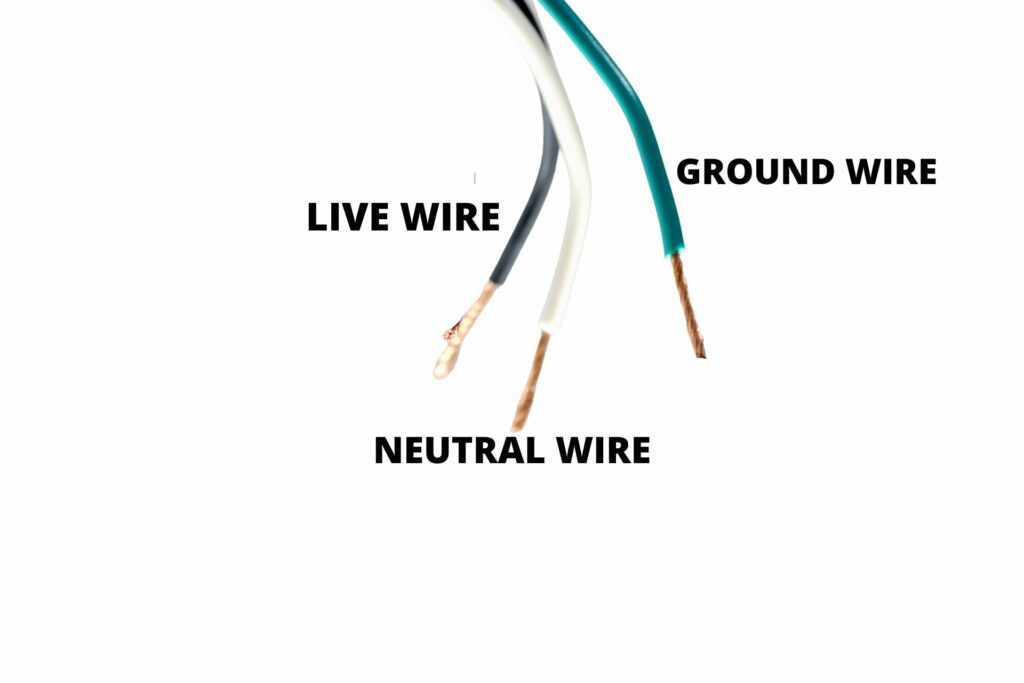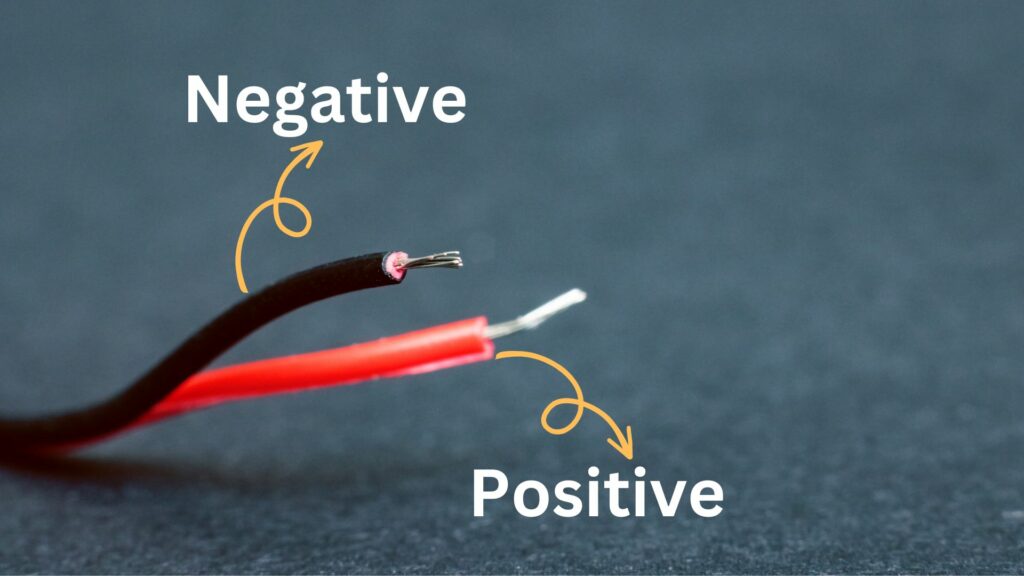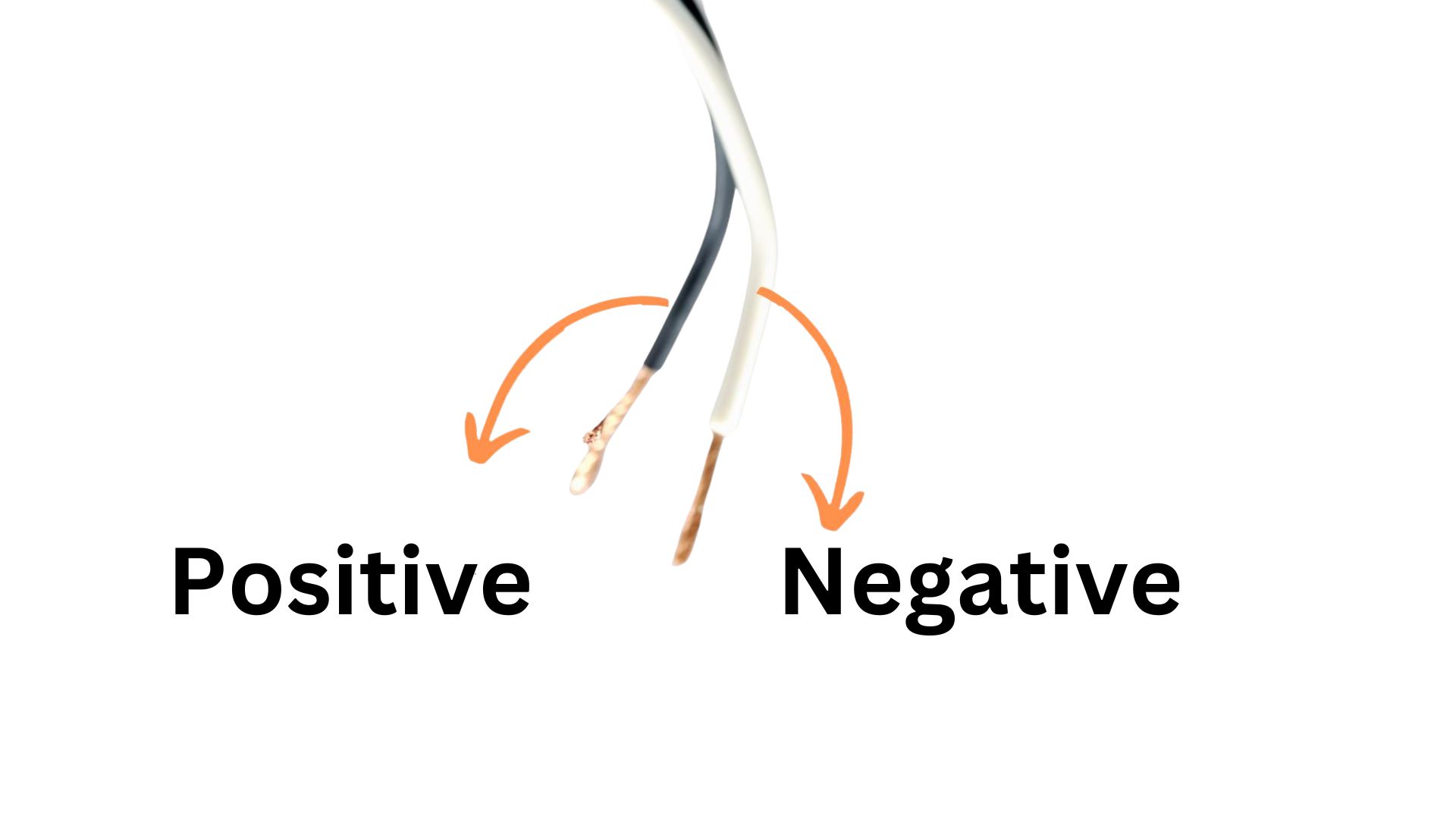Believe it or not, this question doesn’t have a direct answer because color codes and polarities vary depending on the system. Consider the following:
1). Color Codes – Black Wire Is Positive
The polarity creates confusion because even laypeople understand color codes. They know that a conventional circuit has three wires, namely: black (hot), white (neutral), and green or bare (ground). They don’t understand how polarity enters the picture.

Interestingly, the color codes and polarities are somewhat connected, and if you know how to interpret the colors, it won’t take you long to understand the polarity. Usually, electricians are taught to interpret and recognize color schemes.
But laypeople have taken an interest in this topic as well because they perform so many DIY projects. Before you handle electrical wires, you should check the local guide. It will explain the different colors mean and how to use them.
Admittedly, what you see in your house may not match the information in the handbook because color standards change.
2). AC Power – Black Wire Is Positive
Most laypeople are familiar with AC because it runs the appliances in their homes. You will find the three wires mentioned above in AC systems. Technically, AC systems don’t have polarities.
The poles in an AC system switch sixty times per second.
Therefore, you can’t have positive and negative lines. Although, this Quora thread has tackled that particular conundrum by pointing out that black is positive for 1/120th of a second, and then white becomes positive. This cycle occurs every 1/60th of a second.
You have every reason to accept that explanation. After all, the hot wire is typically positive. It carries the electricity from the source to the appliance. This is also the most dangerous wire because it always has a current (unless you de-energize the circuit).
On the other hand, neutral is the negative wire. This line takes the current back to the source. In a way, a circuit is basically a loop, with the current running from the source to the appliance and back.
You need both the hot and neutral for the circuit to work. While the ground provides protection against surges, it isn’t as essential as the neutral and hot lines. As far as the ‘black vs. white’ debate is concerned, the hot wire is typically black, while the neutral is white.
But this is why you need a handbook. Different locations use different color schemes. Therefore, you may call the white wire negative because you think it’s neutral when your country uses blue for the neutral.
To avoid costly and potentially fatal mistakes, consult the organization that regulates the color codes in your region. You can’t go wrong if you remember that neutral is negative and hot is positive. The changes in the color codes and schemes won’t confuse you.
It is worth noting that some AC systems have red, black, and white wires. In these instances, red is also hot, which makes the color positive. Keep three vital factors in mind:
- White is negative if the cable has two wires (Black and White).
- White is neutral if the cable has more than two wires.
- White is hot/positive if someone marks it with red or black.
3). DC Power – Black Wire Is Negative

Unlike AC, which flows in both directions, DC moves in one direction. DC has a white wire. But according to wikiHow, white is either neutral or ground. Additionally, black is not positive. In DC, black is negative, while red is positive.
If you see two black wires and one white wire, the plain black wire is positive. The black wire with the white stripe is negative.
How To Identify Positive And Negative Wires?
The easiest option is to use a multimeter. The process involves the following:
- Get a digital multimeter.
- Connect the red probe to the end of one wire and the black probe to the end of another wire.
- A positive reading points to a positive wire. A negative wire will show a negative reading.
- You can repeat this process for each wire until you know all the polarities.
What if you don’t have a multimeter? Follow the standard wiring conventions, for instance:
- Black and white are positive and negative in an AC system.
- Red and black are positive and negative in a DC system.
- Speaker wires don’t have black and white wires. Instead, you will see silver (Negative) and copper (Positive) strands. Speaker wires have clear jackets. This allows you to see the conductors beneath.
- Power cords have hot and neutral. They don’t have polarities. The neutral is white/ribbed/white-striped. The hot wire is black or red without ribbing or stripes.
- Extension cords have a ribbed wire, which is negative. The positive wire is smooth.
- The green line rarely changes. Green (or bare) is usually the ground.
- Because low-voltage LEDs are DC electronics, you can follow the convention mentioned above where the black wire is negative and the red wire is positive.
As you can see, identifying the polarity is easier said than done. The only reliable method of finding the positive and negative wires is to test them with a multimeter. Color codes and standards are unreliable because they change so frequently.
Manufacturers in many countries are not mandated to follow those codes and standards. Therefore, you can’t trust them to give a black color to the positive wire and white to the negative line in an AC system.
What Happens If Black And White Wires Are Switched?
Black is hot, while white is neutral. Connecting the black wire to its white counterpart will lead to a short circuit. In the best-case scenario, the breaker will trip before anything terrible can happen.
But if the breaker malfunctions, you will see sparks. Don’t be surprised if one or more appliances fail. The short circuit may start a fire. This practice tends to produce explosive results.
If you reverse the wires, you may energize the metallic parts of an electronic device. For instance, you will make the socket sleeve of a light fixture hot. You may kill unsuspecting individuals when they touch it.
This is why many electricians encourage laypeople to consult a professional when they undertake DIY electrical projects. Ask an expert to check your work for mistakes.
Common Misconceptions About Black And White Wires
1). People think black is always positive and white is always neutral. But the polarity changes depending on the system. In some scenarios, black is negative, and red is positive.
2). Despite common assumptions, black and white wires are not always hot and neutral. Sometimes, white is hot. Additionally, black can be neutral.
3). Some people think black and white are the only significant wires in a circuit. But some circuits have two hot wires (black and red) along with a white neutral line.
4). A few laypeople think the white wire is harmless. They are convinced that black is the only dangerous line because electricians call it the ‘Hot wire.’ But white is just as dangerous because it takes the current back to the source. A white cable can kill you if you mishandle it. According to EC&M, many laypeople misjudge the danger the neutral wire poses because the NEC calls it the grounded conductor.
5). The black wires you see overhead (entering buildings) are not necessarily insulated. They have a jacket that protects them from external damage. But that doesn’t mean it is a good idea to touch them.

